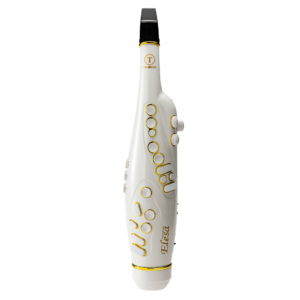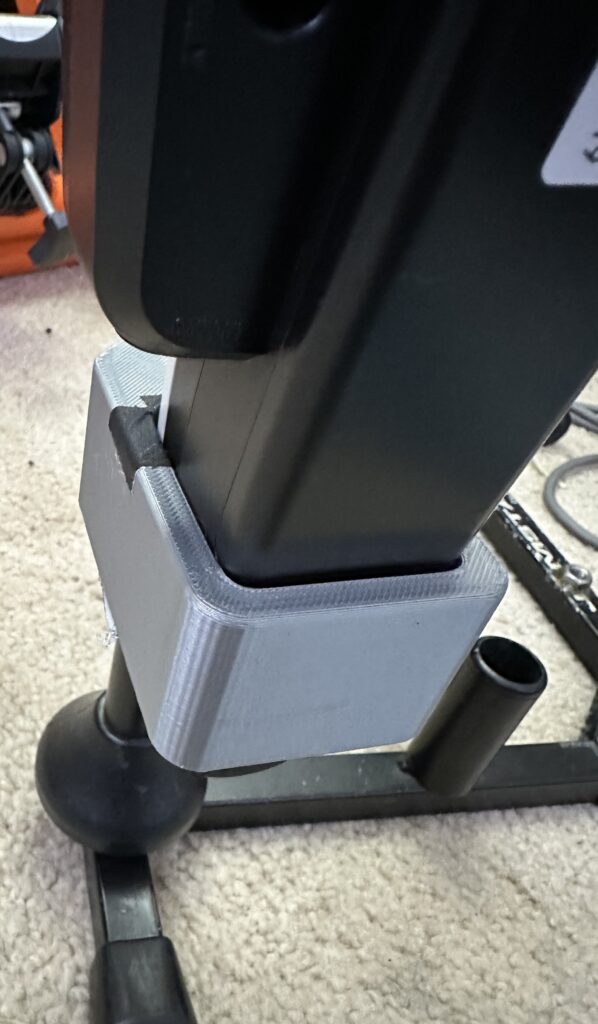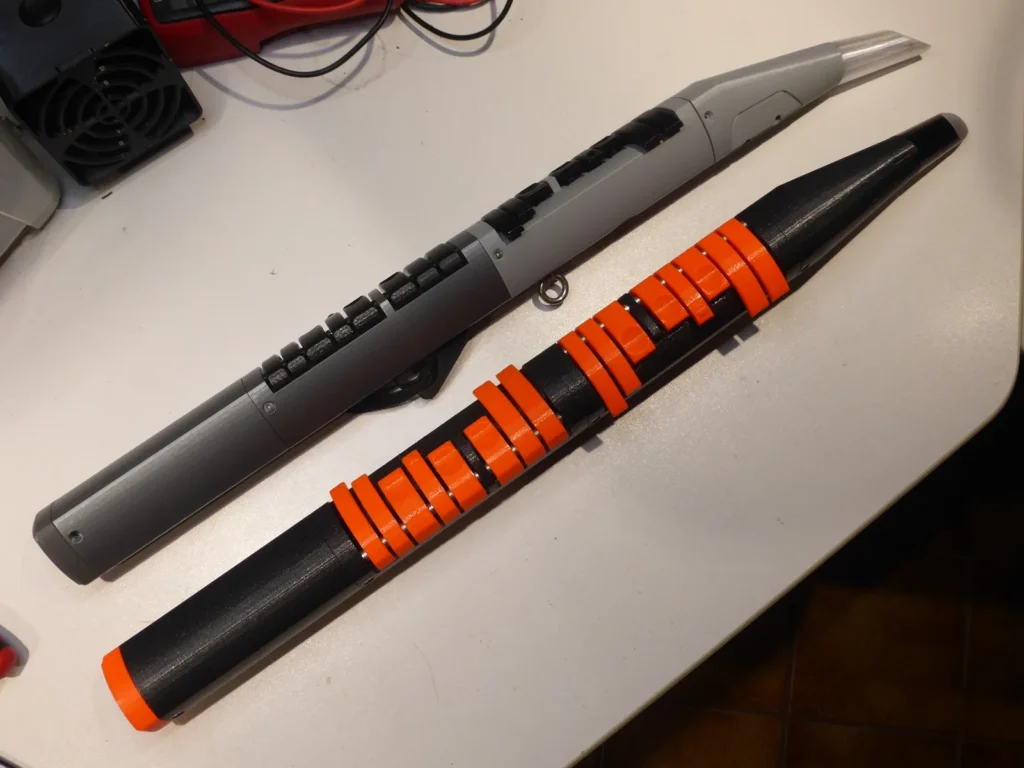Someone asked me about this recently, and I honestly totally forgot that the Akai EWI 4000S has different fingering modes. If you too forgot, refresh yourself here (reference manual).
I suppose if you are coming from another instrument, say Oboe, flute, clarinet, saxophone, or trumpet, switching the EWI into a mode that emulates the fingerings from the instrument you are coming from makes the most sense. So, obviously, if you play flute, switch the EWI into Flute Fingerings mode. But what about if you play something else, or perhaps you play nothing at all.
The EWI 4000 does offer an EWI Fingerings Mode, which looks pretty much identical to the saxophone fingering mode with a couple of differences. First, the revision D manual I think has a misprint on the EWI Fingerings. G and G# are the same fingerings. I think the meant to color in the next key, K5 for G#. The second thing I noticed when I printed off the two fingering charts (yes, I had to print them off and cross out the fingerings that were the same) was the the EWI fingerings were basically the same exact fingerings as the saxophone mode fingerings. The FOUR differences I noted was that the saxophone fingerings offered 4 alternatives that are absent in the EWI Mode fingerings. These alternates are:
- Low B Alternate
- Low C Alternate
- Low C# Alternate
- Middle Bb Alternate
If you are coming from an instrument that isn’t offered as a fingering on the EWI 4000, what mode should you use? That is a tough call. I would say saxophone mode, because it makes more sense to me (cause I obviously play saxophone) and also that having more alternatives is NEVER a bad thing.




The most alternative fingerings are definitely offered by the original EWI fingerings.
(Theoretically there are 4096 possible combinations. Since the Bb bis key is only active in certain combinations this number is reduced to something between 2,048 – 3,000 possible fingering combinations.)
I would strongly recommend to use the EWI fingerings no matter what instrument you are coming from. There are two good reasons for this:
1) The EWI fingerings are the fingerings that were originally designed for the instrument.
2) There are too many essential keys missing on the sax, flute and oboe fingerings for actually using these fingerings without having to relearn lots of technical passages and thus getting further confused by having a new version that won’t work on the original instrument anymore.
There are no palm keys for the sax. No thumb keys for the flute. No third octave fingerings for any instrument.
This clearly contradicts the idea of instantly using familiar fingerings.
The reason why Akai had added those fingerings is quite clearly a marketing strategy. It makes people believe that the EWI is easier to learn for newbies as it actually is. At the same time it limits those newbies to an inferior fingering system.
I totally had to create a login just to add my bit to this thread. The only fingerings worth using are the EWI fingerings. The post above misses a crucial point (or at least didn’t make it entirely clear) which is that the EWI system opens up amazing possibilities. Whereas the mimicking of flute, sax etc. replicates a fingering system which slowly evolved over time to deal with the way that sound is produced and pitch controlled in a tube… But the EWI is not a tube. To stress the point… There is nothing inherently logical about those fingering systems unless you consider their role in releasing and altering the partials within a wave… But the EWI doesn’t need that.
The other breakthrough moment I found was realising that each key in the EWI system actually has a more profound use – it raises or alters the pitch of the note by a certain number of semitones. So…. If I’m fingering D I can lift up my middle finger and ring finger on my right hand to raise the pitch a minor third to F… Or… I can raise the index finger on my left hand to do the same. This is just one new freedom, so I can play a riff and then quickly transpose that riff a minor third. Equally I can raise (or lower) the pitch of a given pattern by one semitone, a whole tone, etc. This opens up the instrument to be treated a little like a guitar where patterns can be moved around the fretboard. It also gives you a massive number of options for alternative fingerings for each note, each scale, each arpeggio, etc.
It seems a sad irony that the first post was lamenting the loss of a few alternative fingerings compared to the sax whilst completely missing the point.
I would like to change the so-called “Bb”alternate (Right hand index finger) as I am always accidentally hitting it… Yes I have been working on changing my hand position but after years of playing doing this is actually creating wrist problems !
It is funny that they made the lower right-hand keys adjustable with little screws and not the other alternate fingerings?
Do you think doing small piece of plastic to angle that key a little higher would work ?
Oops ,,, Please read “Gluing “ not “doing”
you can disable a key on the ewi by putting gaffer tape over it.I was accidentally hitting the bis key a lot on the ewi 5000 but the tape stopped this.
I wish there was an EWI-like fingering with more keys at the top and changed logic for C2-B2 transition.
I’m used to Clarineo lower register being so intuitively simple. With that, the starting position for me is all holes open, and then I play F maj scale by just closing the holes down.
With EWI, the top two holes are awkward to get used to after Clarineo, because, when playing the scale down, I have to touch the second key first (C2) and then rapidly switch two fingers to release the second key and touch the first one. After that, it goes down as usual. I’m even considering replacing the entire EWI USB internals with an Arduino so that I can have more intuitively clear fingering when I pick up the instrument after not using it for a month or so. Otherwise, I’ll often get confused by this C-B issue.
Well, a Clarineo is not a good example to use. There are alternates to doing a “finger flop” to go between C and B. There is a side key alternative.
While it is interesting and kinda cool that you want to strip out an EWI USB and modify it, I don’t see the point. Doing this just to make the fingerings easier seem kind of counterproductive. You then would never really be able to play another EWI, a real saxophone, or anything else that uses what is considered “standard” fingerings. The fingering is there cause on a real, acoustic instrument, it is how to make the note (in addition to the side C).